How to cite this page Comment citer cette page
Items
has language is exactly
Republic of Ireland
-
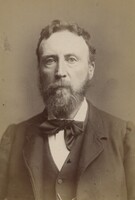 Bruce-Joy, Albert Irish sculptor working in England in the nineteenth and twentieth centuries.
Bruce-Joy, Albert Irish sculptor working in England in the nineteenth and twentieth centuries. -
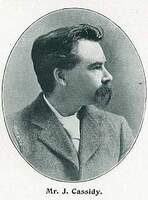 Cassidy, John Irish sculptor who worked in Manchester in the nineteenth and twentieth centuries. Cassidy is probably most well known for sculpting the statue of the slave-trader Edward Colston for Bristol in 1895, but he also produced other colonial works, including the two statues of John and Enriqueta Rylands in Manchester's John Rylands Library.
Cassidy, John Irish sculptor who worked in Manchester in the nineteenth and twentieth centuries. Cassidy is probably most well known for sculpting the statue of the slave-trader Edward Colston for Bristol in 1895, but he also produced other colonial works, including the two statues of John and Enriqueta Rylands in Manchester's John Rylands Library. -
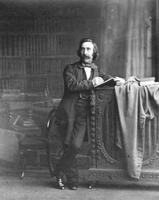 Foley, John Henry Irish sculptor in the nineteenth century. Some of his notable colonial works include the equestrian statue of James Outram in Kolkata, the statue of Colin Campbell in Glasgow, and the equestrian statue of Henry Hardinge, which was originally installed in Kolkata but was later repatriated to the UK.
Foley, John Henry Irish sculptor in the nineteenth century. Some of his notable colonial works include the equestrian statue of James Outram in Kolkata, the statue of Colin Campbell in Glasgow, and the equestrian statue of Henry Hardinge, which was originally installed in Kolkata but was later repatriated to the UK. -
Gahagan, Sebastian Irish sculptor in the late eighteenth and early nineteenth centuries. His most notable colonial work is the monument to the slave-owner and colonial administrator Thomas Picton (1758–1815) in St. Paul's Cathedral.
-
Hughes, John Irish sculptor in the nineteenth and twentieth centuries.
-
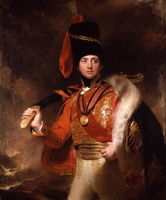 Vane, Charles, 3rd Marquess of Londonderry British soldier, politician and nobleman. He was Under-Secretary of State for War and the Colonies between 1807 and 1809 alongside Edward Cooke (1755–1820). His paternal grandfather, Alexander Stewart (1699–1781), was an Irish landowner who had inherited a fortune from his brother-in-law Robert Cowan (?-1737), who had been Governor of Bombay from 1729 to 1734.
Vane, Charles, 3rd Marquess of Londonderry British soldier, politician and nobleman. He was Under-Secretary of State for War and the Colonies between 1807 and 1809 alongside Edward Cooke (1755–1820). His paternal grandfather, Alexander Stewart (1699–1781), was an Irish landowner who had inherited a fortune from his brother-in-law Robert Cowan (?-1737), who had been Governor of Bombay from 1729 to 1734. -
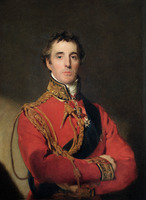 Wellesley, Arthur, 1st Duke of Wellington British statesman, soldier, and Tory politician in the eighteenth and nineteenth centuries. Wellesley's extensive political and military career crossed both Asia and Europe. In India, Wellesley was governor of Seringapatam and Mysore between 1799 and 1805. His brother, Richard Wellesley (1760-1842), was Governor-General of India during the same period. In Britain, Wellesley held a number of political offices, including Chief Secretary for Ireland (1807-1809), Foreign Secretary (1834-1835), and Prime Minister of the United Kingdom (1828-1830; 1834). Wellesley was also twice Commander-in-Chief of the British Army (1827-1828; 1842-1852). Wellesley was also a prominent opponent of the abolitionist movement in Britain, with the historian Michael Taylor describing him as 'the most ardently pro-slavery politician of the nineteenth century'.
Wellesley, Arthur, 1st Duke of Wellington British statesman, soldier, and Tory politician in the eighteenth and nineteenth centuries. Wellesley's extensive political and military career crossed both Asia and Europe. In India, Wellesley was governor of Seringapatam and Mysore between 1799 and 1805. His brother, Richard Wellesley (1760-1842), was Governor-General of India during the same period. In Britain, Wellesley held a number of political offices, including Chief Secretary for Ireland (1807-1809), Foreign Secretary (1834-1835), and Prime Minister of the United Kingdom (1828-1830; 1834). Wellesley was also twice Commander-in-Chief of the British Army (1827-1828; 1842-1852). Wellesley was also a prominent opponent of the abolitionist movement in Britain, with the historian Michael Taylor describing him as 'the most ardently pro-slavery politician of the nineteenth century'.